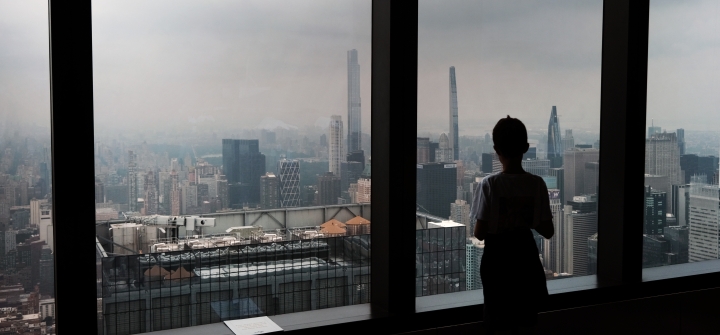A Zero-Emissions Transition Would Save Kids’ Lives
There’s been much talk about the worst-case scenario impacts of climate change and rising pollution—but how much would people, specifically children, benefit from a transition to zero-emission vehicles and electricity?
A new report from the American Lung Association quantifies just that.
The findings are based on a scenario in which, by 2050, all new passenger vehicles and trucks sold in the U.S. are zero-emission, and the nation’s electric grid transitions to non-combustion renewable energy. Under these circumstances, it projects that the U.S. could avoid:
- 2.79 million pediatric asthma attacks.
- 147,000 acute bronchitis cases.
- 2.67 million upper respiratory symptoms.
- 1.87 million lower respiratory symptoms.
- 508 infant mortality cases.
Air pollution and climate change disproportionately impact children’s health for a number of reasons: their lungs are still developing; because they are smaller, they take in more air per surface area of their body, compared to adults; they also tend to do more running around outside.
But, the report notes, more than 27 million children under age 18 live in counties that received a failing grade for unhealthy levels of at least one air pollutant.
Power plants, refineries, cars, and trucks—beyond producing harmful greenhouse gases that drive climate change—produce a wide array of pollutants, including carbon monoxide, nitrogen oxides, volatile organic compounds, and PM2.5 particles that harm kids’ health.
The health risks of pollution and climate change to a child’s health can start before birth and follow them into adulthood, explains Afif El-Hasan, a pediatrician who specializes in asthma and a volunteer spokesperson for the American Lung Association.
El-Hasan explains that an expectant mother exposed to bad air is more susceptible to infections; harmful chemicals like PM2.5 particles can enter the bloodstream and harm the unborn baby, potentially causing premature birth. If that child then grows up surrounded by heavily polluted air, they face a higher risk of asthma and upper and lower respiratory issues. At age 50, a lifetime of pollution exposure for that child takes a toll on their overall lung capacity, heightening the risk of cancer and heart disease.
These risks are higher for children in low-income communities and communities of color. “In areas of lower socio-economic resources, people of color are more likely to be exposed to higher pollution”—for example, living near ports or high traffic areas. “Very often that is coupled with food scarcity and reduced medical resources. It starts to snowball into a bigger and bigger problem,” says El-Hasan.
As a practicing pediatrician, the risks of polluted air are an important part of the calculus in addressing another public health challenge: “We have an epidemic of obesity in this country for kids. I need them out and running. But how about if the kid has asthma, how about if they're in a high pollution area?” he says.
“These are real issues of logistics and practical for a person’s life,” he says.
Given the multi-faceted harms of air pollution and climate change, transitioning to cleaner energy and cleaner vehicles is not only good for kids’ health, it also makes economic sense, says El-Hasan. The report builds on the March 2022 American Lung Association report, Zeroing In On Healthy Air, which illustrates that the transition to zero-emissions could produce $1.2 trillion in public health benefits.
El-Hasan is hopeful that electric vehicles’ rising popularity and performance—along with falling prices and better tax incentives to purchase them—is driving the country in the right direction.
Still, the Lung Association notes that achieving the ambitious milestones laid out in the report would require the federal government and the Environmental Protection Agency to finalize proposed standards for “cleaning up” future cars, buses, and trucks.
Join the 50,000+ subscribers in 170+ countries who rely on Global Health NOW summaries and exclusive articles for the latest public health news. Sign up for our free weekday newsletter, and please share the link with friends and colleagues.
A child looks out at a hazy skyline from an overlook in midtown Manhattan on July 19, 2023, in New York City. Spencer Platt/Getty





